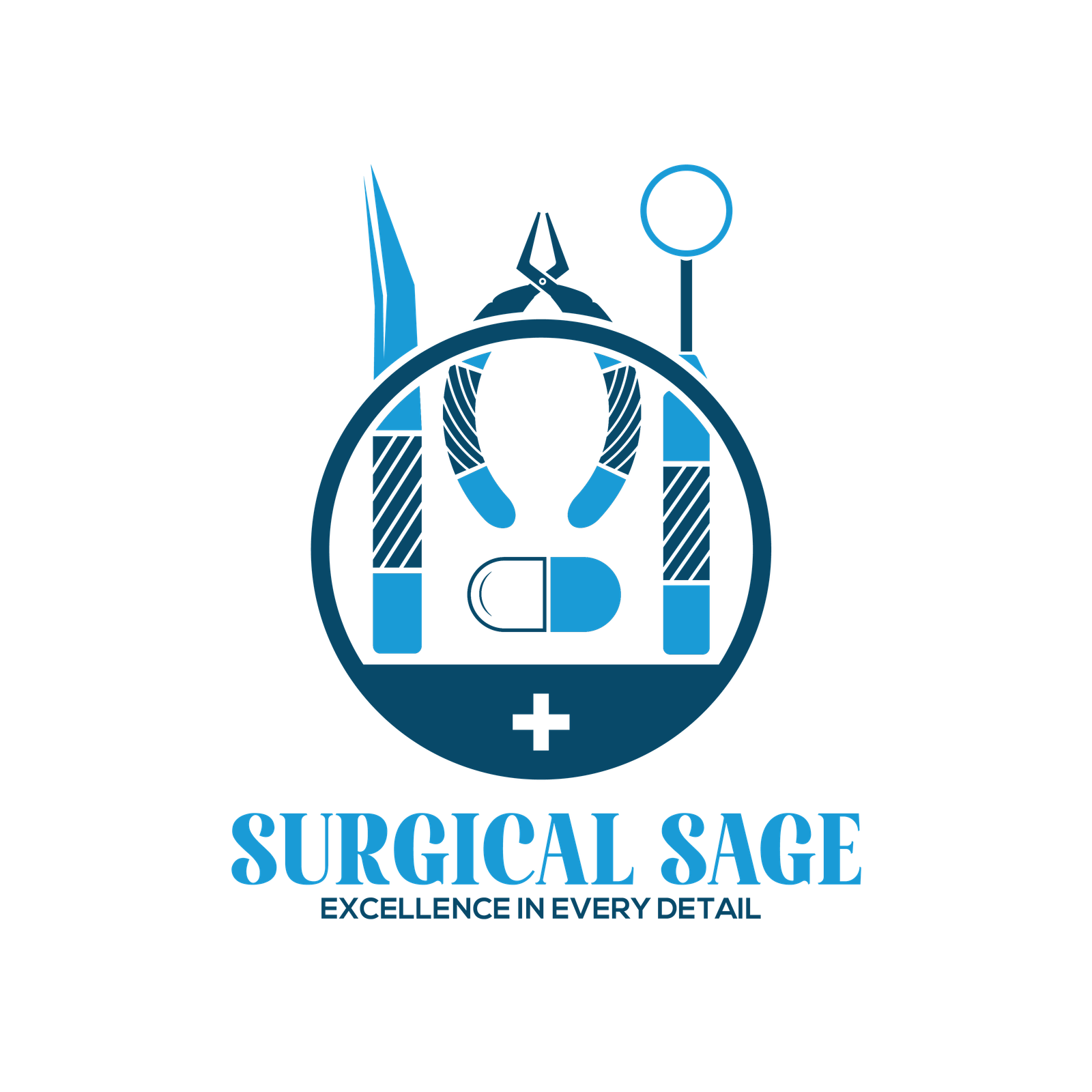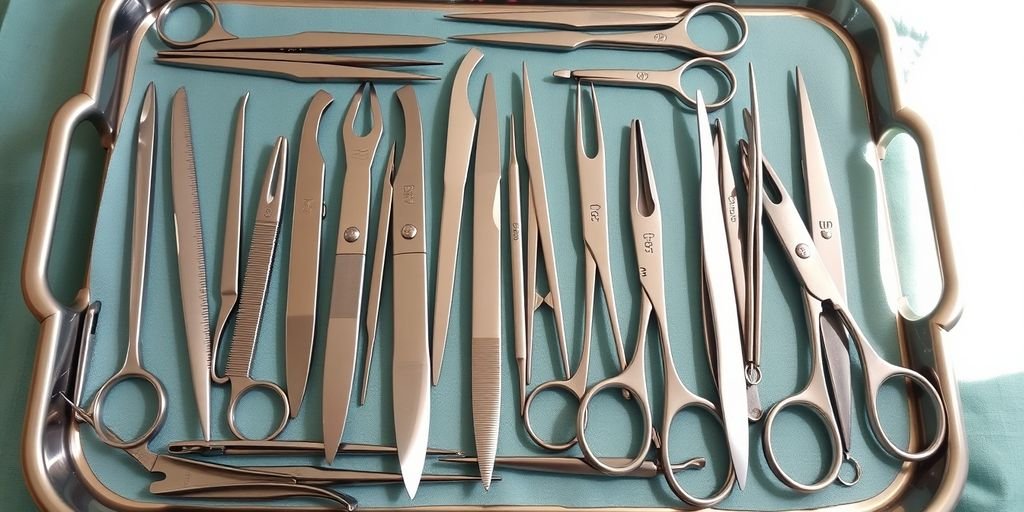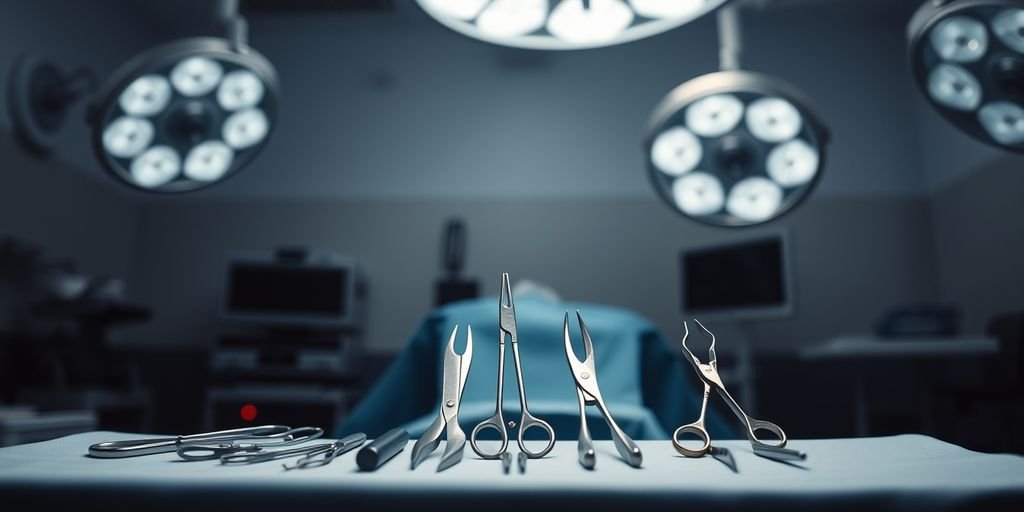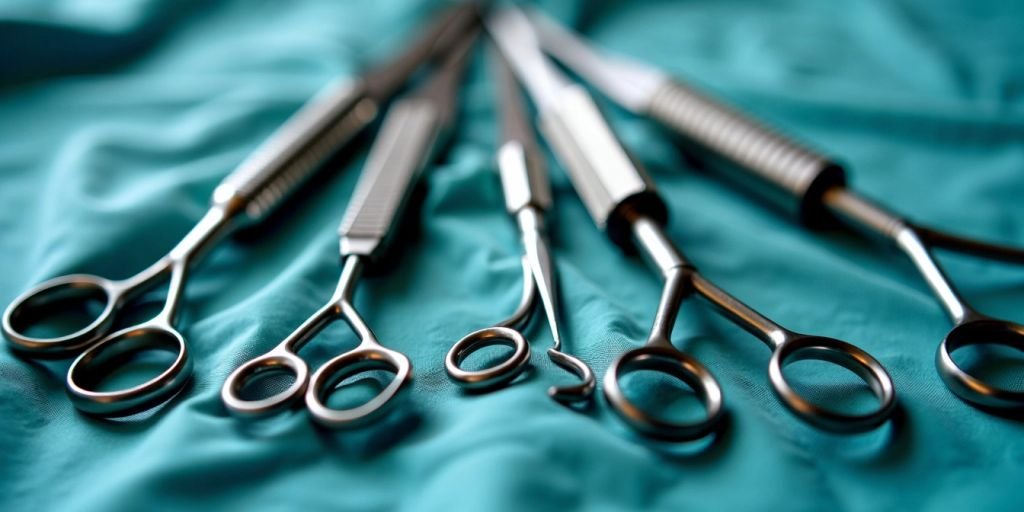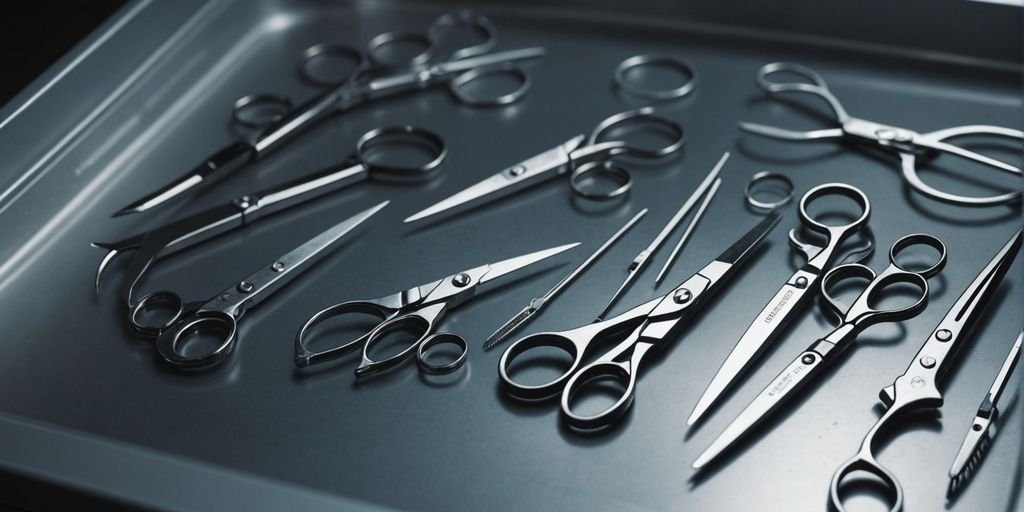General surgery instruments are essential tools that surgeons use during operations. These tools help make surgeries safer and more effective. Knowing about these instruments can help you understand how surgeries are done and why certain tools are used. This guide will cover different types of tools, including scalpels, forceps, and laparoscopic instruments.
Key Takeaways
- Scalpels come in different types and blade sizes, each designed for specific tasks.
- Forceps and clamps are used to hold tissues and control bleeding during surgery.
- Retractors help keep the surgical area open for better visibility.
- Sutures and needles are essential for closing wounds and come in various types.
- Electrosurgical instruments use electrical currents to cut and cauterize tissues, making surgeries quicker and reducing blood loss.
Scalpels and Blades

Types of Scalpels
Scalpels come in various types, each designed for specific surgical needs. The most common types include disposable scalpels, reusable scalpels, and safety scalpels. Disposable scalpels are often used for single-use to ensure sterility, while reusable scalpels are made of durable materials and can be sterilized for multiple uses. Safety scalpels feature a retractable blade to minimize the risk of accidental cuts.
Blade Sizes and Uses
Surgical blades come in different sizes and shapes, each suited for particular tasks. Here’s a quick guide to some common blade sizes and their uses:
| Blade Size | Common Uses |
|---|---|
| #10 | Making large incisions in the skin and subcutaneous tissue |
| #11 | Precision cutting, such as in vascular procedures |
| #15 | Short, precise incisions |
Our catalog includes a variety of surgical blades, scalpels, and handles to meet diverse surgical needs.
Safety and Handling
Proper handling of scalpels is crucial to ensure safety in the operating room. Always use a blade remover to dispose of used blades safely. Never hand a scalpel directly to another person; instead, use a neutral zone or a passing tray. Always ensure that the blade is securely attached to the handle before use.
Remember, whether you need instruments for general surgery or specialized procedures, choosing the right scalpel and blade is essential for a successful outcome.
Forceps and Clamps

Hemostatic Forceps
Hemostatic forceps are essential tools in surgery. They are used to control bleeding by clamping blood vessels. These instruments come in various sizes and shapes, each designed for specific tasks. Some common types include Kelly, Mosquito, and Crile forceps.
Tissue Forceps
Tissue forceps are used to hold and manipulate tissues during surgery. They come in different designs, such as toothed or non-toothed, depending on the tissue type they are meant to handle. These forceps are crucial for precise and delicate operations.
Vascular Clamps
Vascular clamps are specialized tools used to clamp blood vessels during surgery. They help in preventing blood flow to a particular area, making it easier for surgeons to operate. These clamps are designed to be gentle on the vessels to avoid damage.
In surgery, forceps and clamps are indispensable for holding and manipulating tissues, sutures, and other materials. They ensure that the surgical field remains clear and manageable.
Retractors
Self-Retaining Retractors
Self-retaining retractors are designed to hold themselves in place during surgery, freeing up the surgeon’s hands. These tools are essential for long procedures. The Bookwalter® retractor system is a popular choice, known for its reliability and innovation over the past 40 years.
Hand-Held Retractors
Hand-held retractors require an assistant to hold them in place. They come in various shapes and sizes to suit different surgical needs. Common types include:
- Army-Navy Retractor: Used for shallow or superficial incisions.
- Senn Retractor: Often used in plastic surgery.
- Deaver Retractor: Ideal for deep abdominal or chest incisions.
Specialized Retractors
Specialized retractors are designed for specific types of surgeries. They are tailored to meet the unique needs of particular procedures. Examples include:
- Rib Spreaders: Used in thoracic surgery to separate the ribs.
- Laminectomy Retractors: Utilized in spinal surgeries.
- Nerve Retractors: Designed to protect nerves during delicate operations.
Retractors play a crucial role in providing visibility and access during surgery, making them indispensable in the operating room.
Sutures and Needles
Types of Sutures
Sutures are threads used to close wounds. They come in two main types:
- Absorbable Sutures: These dissolve in the body over time. They are used for internal tissues.
- Non-Absorbable Sutures: These need to be removed by a doctor. They are used for skin and other external tissues.
Needle Varieties
Surgical needles come in different shapes and sizes. Here are some common types:
- Cutting Needles: These have sharp edges and are used for tough tissues like skin.
- Tapered Needles: These have a smooth point and are used for soft tissues inside the body.
- Blunt Needles: These are used for very delicate tissues to avoid damage.
Suturing Techniques
There are several ways to stitch a wound. Some common techniques include:
- Simple Interrupted Stitch: Each stitch is tied off separately. This is the most common method.
- Continuous Stitch: One long thread is used for the entire wound. This is faster but can come undone more easily.
- Mattress Stitch: This method provides extra strength and is used for deep wounds.
Proper suturing is crucial for wound healing and preventing infection. Always follow medical guidelines when performing sutures.
Suction Devices
Yankauer Suction
The Yankauer suction is a popular tool in surgeries. It is used to clear blood and fluids from the surgical area. This device has a bulbous tip that helps prevent tissue damage. It is often used in procedures where precision is key.
Poole Suction
The Poole suction is designed for removing large amounts of fluid. It has multiple holes to prevent clogging. This makes it ideal for abdominal surgeries. The Poole suction is often used when there is a need to clear fluids quickly and efficiently.
Frazier Suction
The Frazier suction is a thin, flexible tube. It is used for more delicate procedures. This device is perfect for neurosurgery and other operations that require a high level of precision. The Frazier suction is also used in ENT (ear, nose, and throat) surgeries.
Suction devices are essential in surgeries to keep the area clear of fluids and improve visibility for the surgeon.
Electrosurgical Instruments
Electrosurgical Units
Electrosurgical units (ESUs) are essential in modern surgery. They use high-frequency electrical currents to cut tissue or stop bleeding. These units can be either monopolar or bipolar. Monopolar units require a grounding pad, while bipolar units do not.
Cautery Tools
Cautery tools are used to burn tissue, which helps to stop bleeding or remove unwanted tissue. There are two main types: thermal and electrical. Thermal cautery uses heat, while electrical cautery uses electric current. Both types are vital in various surgical procedures.
Safety Precautions
When using electrosurgical instruments, safety is crucial. Here are some key points to remember:
- Always check the equipment before use.
- Ensure the grounding pad is properly placed for monopolar units.
- Keep the surgical area dry to prevent accidental burns.
- Use smoke evacuation systems to remove harmful smoke.
Proper handling and regular maintenance of electrosurgical instruments can prevent accidents and ensure patient safety.
Laparoscopic Instruments
Trocars and Cannulas
Trocars and cannulas are essential for laparoscopic surgery. They allow surgeons to access the abdominal cavity with minimal incisions. Trocars are sharp instruments used to puncture the body, while cannulas are tubes that keep the pathway open. These tools come in various sizes to fit different surgical needs.
Graspers and Dissectors
Graspers and dissectors are used to hold and manipulate tissues during surgery. Graspers can hold onto tissues firmly, while dissectors help in separating tissues. These instruments are crucial for precise movements and reducing tissue damage.
Laparoscopic Scissors
Laparoscopic scissors are designed for cutting tissues inside the body. They are long and slender, allowing for precise cuts in tight spaces. Different types of scissors are available, each suited for specific tasks in surgery.
Laparoscopic instruments, like those from Snowden-Pencer and V. Mueller, include a wide range of tools such as trocars, needle holders, graspers, and scissors. These instruments are vital for minimally invasive surgeries, offering precision and control.
Conclusion
In summary, understanding general surgery instruments is crucial for anyone involved in surgical care. These tools are the backbone of successful surgeries, helping doctors perform with precision and care. From scalpels to forceps, each instrument has a special role and knowing how to use them properly can make a big difference in patient outcomes. Whether you are a student, a new medical professional, or just curious, learning about these instruments is a valuable step in your journey. Keep exploring and stay curious, as the world of surgery is always evolving.
Frequently Asked Questions
What are the different types of scalpels?
Scalpels come in various shapes and sizes. Some common types include disposable scalpels, reusable scalpels, and safety scalpels.
How do I choose the right blade size?
Choosing the right blade size depends on the type of surgery and the precision needed. Smaller blades are used for delicate cuts, while larger blades are for bigger incisions.
What are hemostatic forceps used for?
Hemostatic forceps are used to control bleeding by clamping blood vessels during surgery. They come in different shapes and sizes for various needs.
How do retractors help in surgery?
Retractors are used to hold back tissues and organs, giving the surgeon a clear view and access to the area being operated on.
What are the safety precautions for electrosurgical instruments?
Safety precautions include checking the equipment before use, grounding the patient properly, and using the lowest effective power setting to avoid burns.
Why are different suction devices used in surgery?
Different suction devices are used to remove fluids and blood from the surgical area. Each type is designed for specific tasks and parts of the body.
